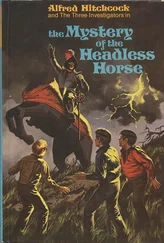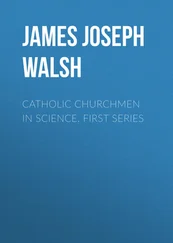So, the world ‘will never starve for want of wonders’, the more so for knowing and wondering how the sky above and the earth below and ‘all that dwell therein’ – including the human mind, with its powers of reason and imagination – originated as a mass of formless atoms in that ‘moment of singularity’ of the Big Bang fifteen billion years ago.
The poet William Wordsworth, seeking to catch the enfolding delight of that sky above and earth below, called it ‘the sublime’,
Whose dwelling is the light of setting suns,
And the round ocean and the living air,
And the blue sky,
A spirit that impels and rolls through all things.
The feelings evoked by nature and ‘the sublime’ were, for the American poet Walt Whitman as for so many poets and writers, the most powerful evidence for a hidden, mystical core to everyday reality.
‘There is, apart from mere intellect,’ he wrote, ‘a wondrous something that realises without argument an intuition of the absolute balance, in time and space of the whole of this multifariousness we call the world ; a sight of that unseen thread which holds all history and time, and all events like a leashed dog in the hand of the hunter.’
That sublime nature has always provided the most powerful impetus to the religious view, its celebration a central feature of all the great religions. For the German theologian Rudolph Otto (1869–1937), the ‘sublime’ was a ‘ mysterium tremendum et fascinans ’: both awesome, in whose presence we feel something much greater than our insignificant selves, and also fascinating, compelling the human mind to investigate its fundamental laws.
This brings us to the second of the dual meanings of ‘wonder’ suggested at the close of the preceding chapter, to ‘wonder why ’, which, as the Greek philosopher Plato observed, ‘is the beginning of all knowledge’.
‘The scientist does not study naturebecause it is useful to do so,’ wrote the nineteenth-century French mathematician Henri Poincaré. ‘He studies it because he takes pleasure in it; and he takes pleasure in it because it is beautiful. If nature were not beautiful, it would not be worth knowing, and life would not be worth living … I mean the intimate beauty which comes from the harmonious order of its parts and which a pure intelligence can grasp.’
The greatest (probably) of all scientists, Isaac Newton, seeking to comprehend that ‘harmonious order of parts’, would discover the fundamental laws of gravity and motion, that, being Universal (they hold throughout the universe), Absolute (unchallengeable), Eternal (holding for all time) and Omnipotent (all-powerful), he inferred, offered a glimpse into the mind of the Creator. Newton captured this dual meaning of wonder, to ‘wonder at’ and to ‘wonder why’, in his famous confession that the most he could hope to achieve was to illuminate the workings of some small part of that sublime world: ‘I do not know what I may appear to the world,’ he wrote, ‘but to myself I seem to have been only like a boy playing on the sea shore, diverting myself now and then, finding a smoother pebble than ordinary, whilst the great ocean of truth lay all undiscovered before me.’
The wonders of the world are so pervasive that to the seemingly less sophisticated minds of earlier ages (such as Newton’s) they were best understood as ‘natural miracles’. To be sure, the undeviating and punctual sun, the cycle of life, the infinite variety of living things, their interconnectedness to each other, these are all part of nature, and are faithful to its laws. They are ‘natural’. But the totality of it all, its beauty and integrity and completeness, that ‘great undiscovered ocean of truth’, lie so far beyond the power of the human mind to properly comprehend, they might as well be ‘a miracle’. Thus science and religion were cheerfully reconciled, the scientist seeing his task as a holy calling, where Robert Boyle, the founder of modern physics, would perceive his role as ‘a priest in the temple of nature’.
This is scarcely the modern view. Most people, of course, acknowledge the beauty and complexity of the world and find it admirable, even uplifting – but you could search in vain for a textbook of biology or zoology, astronomy or botany, or indeed of any scientific discipline, which even hints that there is something astonishing, extraordinary, let alone ‘miraculous’, about its subject. Science no longer ‘does’ wonder, which is more readily associated nowadays with the incurious mysticism and incense of the New Age. Science prefers to cultivate an aura of intellectual neutrality, the better to convey its disinterested objectivity, its commitment to the ‘truth’. Hence the highly technical, and to the outsider often impenetrable, prose of its texts and learned journals, from which any sense of wonder is rigorously excluded.
There are, as will be seen, several important reasons for this modern-day lack of astonishment, but the most important is undoubtedly the general perception that science, since Newton’s time, has revealed those ‘natural miracles’ to have a distinctly non-miraculous, materialist explanation – culminating in that firestorm of scientific discovery of the past fifty years, which has integrated into one coherent narrative the entire history of the universe from its origins to the present day. To be sure, science may not capture the beauty and connectedness of it all, the ‘sublime spirit that rolls through all things’, but this is more than compensated for by the sheer drama and excitement of the events it has so convincingly described.
The scale of that intellectual achievement is so great that there might seem little room any more for the ‘natural miracles’ of an earlier age, or to ‘wonder’ whether there might after all be more than we can know. It would certainly require a truly Olympian perspective, capable of surveying the vast landscape of science, to recognise where and what the limits to its knowledge might be – and that would seem an impossibility. Yet it is not quite so, for while that landscape is indeed vast, and far beyond the comprehending of any individual, it is nonetheless sustained by three great unifying phenomena that impose order on the world – which on examination can tell us something very profound about science and the limits of its materialist explanations.
It is fruitless – always has been, always will be – to pose that most elementary of all questions: ‘Why is there something rather than nothing?’ The same however does not apply to the second and supplementary question: ‘Why, given there is something, are both the physical universe (and all that it contains) and all life (in its infinite diversity) so ordered ?’ They should not be, for anything left to itself will tend towards chaos and disorder, as fires burn out and clocks run down – unless countered by a compensating force imposing order, restituting lost energy.
There are (to put it simply) three ‘forces for order’: first the force of gravity, as discovered by Sir Isaac Newton, the glue that binds the universe together; next the all-powerful genes strung out along the Double Helix, imposing the order of form, the shape, characteristics and attibutes unique to each of the millions of species of living things; and thirdly the human mind, that imposes the order of understanding on the natural world and our place within it. These three forces control or sustain all (or virtually all) phenomena in the universe, and stand proxy for the ‘vast landscape’ of science. Thus, if they are knowable scientifically as belonging to that materialist, second-order reality of the physics and chemistry of matter (where water is a combination of two molecules of hydrogen and one of oxygen), then by definition there is nothing in theory that science cannot know. But if they are not so knowable, one can only infer that they exert their effects through some other force that lies beyond the range of science and its methods to detect. We start with Sir Isaac Newton’s theory of gravity.
Читать дальше












